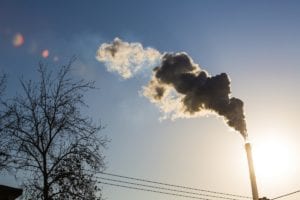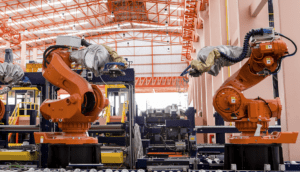We are living in an extraordinary time, the likes of which few of us could even imagine a few months ago. The ramifications of COVID-19 on human physical and mental health, the global economy, businesses (including many of our clients), and more are simply unfathomable.
While optimism is difficult during such a tragedy, there are outcomes from the global response to this crisis that bear examination. One is the unprecedented coordination and actions of world governments to slow and control the spread of the virus. Another is the empathetic reaction the virus has  drawn out, uniting people in care for each other. Still another is the planetary impact. While the virus has had devastating effects on our economy, we have also seen a drop in global emissions and air pollution and more mindful behavior of the consumption of goods.
drawn out, uniting people in care for each other. Still another is the planetary impact. While the virus has had devastating effects on our economy, we have also seen a drop in global emissions and air pollution and more mindful behavior of the consumption of goods.
The situation has led many to draw parallels to the global response—or relative lack thereof, so far—to climate change. The acute threat of the virus has already claimed thousands of lives; yet, the existential threat of climate change is also a global health emergency, affecting millions of people each year with the potential to affect even more in the future.
If pressed to find a silver lining, the relative value of the pandemic is that it has given us a unique opportunity to practice our global threat response; practice that will serve us when it comes to acting on climate change. We’ve learned how quickly and how radically we can implement broad spectrum social and financial measures. We’ve identified gaps in our systems, such as supply chain, that must be mitigated. We’ve also seen the speed and agility with which global business has pivoted, finding opportunities for operational experimentation and transformational innovation in this trying time.
Albeit slowly—and as we figure out a new way of working—the world is thirsting to shift towards recovery, whether at the country level, the corporate level, or the individual level. For energy and sustainability professionals, that will mean getting back to the work of achieving increasingly ambitious goals around carbon abatement. The dip in carbon emissions during this crisis is almost certainly temporary, and efforts to stimulate the economy could have a rebound effect. Now is an ideal time to ensure you have a clear, pragmatic, and cost-effective strategy and execution roadmap to achieve your goals in a recovery scenario.
With that in mind, here are three observations to stimulate your thinking:
-
United action on climate change is possible
 These circumstances demonstrate clearly that a coordinated global response to a crisis can be achieved in a relatively short time. What could be a short-sighted result of the pandemic is a return to business-as-usual. We can’t afford to do that when it comes to climate change. Instead, we can seize this moment to embrace transformation and innovation for the better.
These circumstances demonstrate clearly that a coordinated global response to a crisis can be achieved in a relatively short time. What could be a short-sighted result of the pandemic is a return to business-as-usual. We can’t afford to do that when it comes to climate change. Instead, we can seize this moment to embrace transformation and innovation for the better.
That doesn’t mean we need to halt the global economy. The remarkable thing about climate change action, which energy and sustainability professionals already realize, is that we have many solutions today, with new technologies and innovations emerging all the time. Some of these solutions (renewable energy and microgrids, for example) provide additional cost-savings and resilience benefits that can positively impact the bottom line and help future-proof business against disruption. Energy efficiency means you’re saving money by being smart around how you’re using it. Others, like the practices of circular economy, drive creativity, ingenuity, and growth in the face of finite resources.
Now is an ideal time to unite with and learn from others—peer companies, adjacent industries, suppliers, and thought leaders—and share best practices that will make all of us stronger and better positioned to act on climate change when the moment of recovery calls for it.
-
We can learn from the gaps
All of us have been affected by the pandemic and have experienced first-hand the gaps that it is bringing to light. From stores running out of essentials in the face of unexpected demand, to schools and businesses scrambling to accommodate virtual learning and work, to the development and implementation of on-the-fly contingency plans for continuity, the threat has shown us where our global society and economy is vulnerable.

But this is also an enormous opportunity. Not only has it given rise to innovation and cooperation in the moment, it’s also pressure tested many of the systems within energy and sustainability professionals’ scope of control or influence.
It is an opportune time for companies to reflect on those vulnerabilities and to catalog the areas that must be addressed in the face of other threats, like climate change, which has the potential to disrupt business in similar ways. As businesses recover, we have a unique opportunity to reconsider the importance of resource efficiency, the dangers of climate risk that lead to supply chain instability, and the need for energy and resource resilience to ensure future continuity. Planning for and future proofing your business through diligent climate scenario analysis and risk assessment is critical step for managing future risks.
-
It’s a question of when, not if, there will be future crises
While the COVID-19 pandemic is an acute and extraordinary threat, it is certainly not the last crisis any business will face. Should climate change continue unabated, we may see accelerating crises driven by extreme weather events, drought leading to food and water shortages, and more.
The post-virus recovery period could be one of economic resurgence by investing in resiliency. Encouragingly, companies with stronger sustainability actions and offers have outperformed their peers during the current crisis. This implies that the market favors companies that are invested in long-term success, disruptive solutions, and growth-stimulating innovations.
 Emerging from the current crisis, energy and sustainability professionals have a singular opportunity to influence their company to take proactive actions in favor of resiliency and climate change preparedness. But beyond this group exists the opportunity for C-level executives to consider the same. Though it will be necessary in many ways to get back to business-as-usual as quickly as possible, taking time while already in a period of recalibration to prepare for a resilient, green recovery will favor long-term success and protect businesses against future crises.
Emerging from the current crisis, energy and sustainability professionals have a singular opportunity to influence their company to take proactive actions in favor of resiliency and climate change preparedness. But beyond this group exists the opportunity for C-level executives to consider the same. Though it will be necessary in many ways to get back to business-as-usual as quickly as possible, taking time while already in a period of recalibration to prepare for a resilient, green recovery will favor long-term success and protect businesses against future crises.
Our global team at Schneider Electric Energy & Sustainability Services stands ready to advise and lead our clients in this unprecedented time with our unwavering commitment to serve. We know that we stand against this threat together, that we will recover together, and that, ultimately, together we hold the keys to mitigating climate change once and for all. We are honored to serve the energy and sustainability community in this time and look forward to building a stronger, united future. Visit our Perspectives Hub to join the conversation or contact us directly for support.



